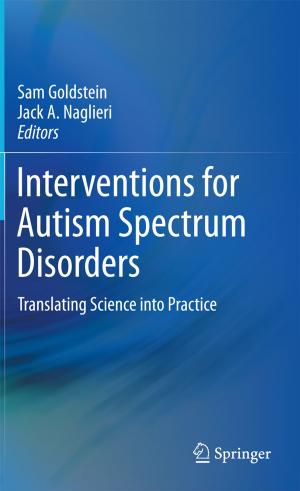Gene-Environment Interplay in Interpersonal Relationships across the Lifespan
Nonfiction, Health & Well Being, Medical, Medical Science, Genetics, Psychology, Research| Author: | ISBN: | 9781493929238 | |
| Publisher: | Springer New York | Publication: | July 3, 2015 |
| Imprint: | Springer | Language: | English |
| Author: | |
| ISBN: | 9781493929238 |
| Publisher: | Springer New York |
| Publication: | July 3, 2015 |
| Imprint: | Springer |
| Language: | English |
Intriguing new findings on how genes and environments work together through different stages of life take the spotlight in this significant collection. Studies from infancy to late adulthood show both forces as shaping individuals' relationships within family and non-family contexts, and examine how these relationships, in turn, continue to shape the individual. Transitional periods, in which individuals become more autonomous and relationships and personal identities become more complicated, receive special emphasis. In addition, chapters shed light on the extent to which the quantity and quality of genetic and environmental influence may shift across and even within life stages.
Included in the coverage:
- Gene-environment interplay in parenting young children.
- The sibling relationship as a source of shared environment.
- Gene-environment transactions in childhood and adolescent problematic peer relationships.
- Toward a developmentally sensitive and genetically informed perspective on popularity.
- Spouse, parent, and co-worker: roles and relationships in adulthood.
- The family system as a unit of clinical care: the role of genetic systems.
Behavioral geneticists, clinical psychologists, and family therapists will find in Gene-Environment Interplay in Interpersonal Relationships across the Lifespan a window into current thinking on the subject, new perspectives for understanding clients and cases, and ideas for further study.
Intriguing new findings on how genes and environments work together through different stages of life take the spotlight in this significant collection. Studies from infancy to late adulthood show both forces as shaping individuals' relationships within family and non-family contexts, and examine how these relationships, in turn, continue to shape the individual. Transitional periods, in which individuals become more autonomous and relationships and personal identities become more complicated, receive special emphasis. In addition, chapters shed light on the extent to which the quantity and quality of genetic and environmental influence may shift across and even within life stages.
Included in the coverage:
- Gene-environment interplay in parenting young children.
- The sibling relationship as a source of shared environment.
- Gene-environment transactions in childhood and adolescent problematic peer relationships.
- Toward a developmentally sensitive and genetically informed perspective on popularity.
- Spouse, parent, and co-worker: roles and relationships in adulthood.
- The family system as a unit of clinical care: the role of genetic systems.
Behavioral geneticists, clinical psychologists, and family therapists will find in Gene-Environment Interplay in Interpersonal Relationships across the Lifespan a window into current thinking on the subject, new perspectives for understanding clients and cases, and ideas for further study.















